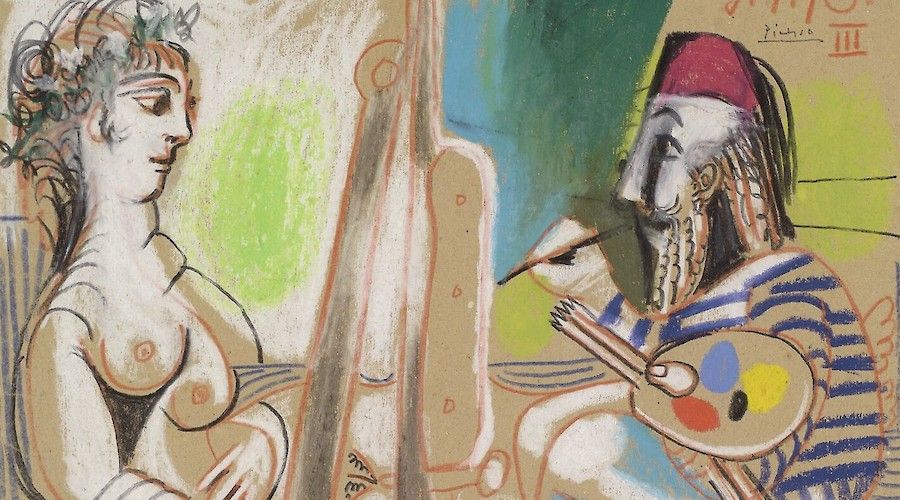Picasso Drawings and Prints at The San Diego Museum of Art

This exhibition showcases 17 paper works by Pablo Picasso, apart from one ink drawing by Henri Matisse and a ceramic piece by the Spanish artist, all of them from the Museum’s permanent collection.
Pablo Ruiz Picasso was born in Málaga, a historic port city on Spain’s southern coast. His middle-class family —his father was an art professor— relocated several times during Picasso’s childhood, allowing him to visit the Prado Museum for the first time in 1895. After rigorous academic training in Madrid, Picasso moved to Paris, where he worked closely with artists including Georges Braque, Juan Gris, and Henri Matisse. Around 1907, he and Braque pioneered Cubism, the shockingly abstract new art form that altered perspective with intersecting planes of space. Within this framework, he also began incorporating African visual motifs. Picasso’s art, and his unwavering commitment to creative practice, changed the course of international modernism.
A giant of modernism in his adopted France, Picasso never abandoned his Spanish artistic origins, rooted in his visionary forbears, El Greco —whom he called “Cubist in construction”— and Velázquez and Goya. Picasso’s artistic genius, at least in part, came from a profound understanding of the Western tradition, and a willingness to turn it on its head.
Picasso: Drawings and Prints is curated by Michael A. Brown, Ph.D, Curator of European Art, The San Diego Museum of Art.